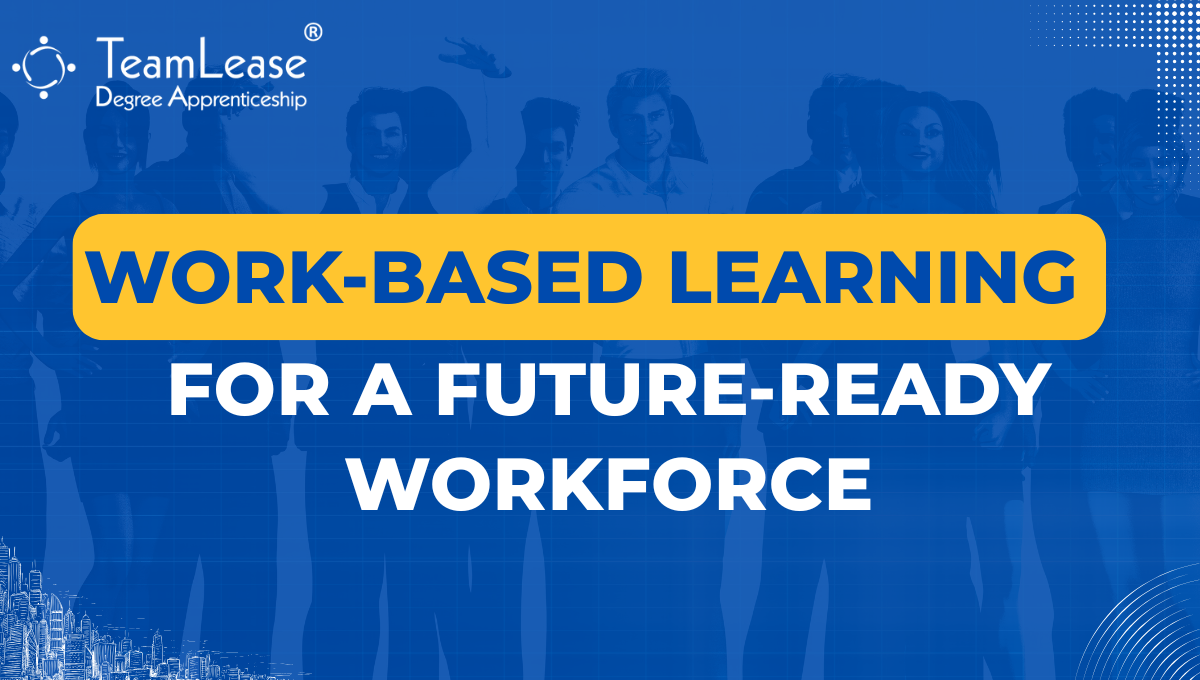The current Talent Crunch and skill gap in the Indian workforce have resulted in soaring "Cost to Hire" rates and diminished returns on investment for employers. The India Employability Report highlighted the lack of employability and essential skills among a significant portion of the workforce, which is already impacting Indian industries.
Challenges in Hiring and Expansion
Replacing an employee or expanding a company's workforce has become an arduous, time-consuming, and costly process, resulting in low initial returns on investment. Companies must bear the expenses associated with maintaining an internal HR department, sifting through resumes, conducting interviews, and dealing with the initial low productivity of new hires as they adjust to their new roles, responsibilities and environment. Moreover, the scarcity of skilled labour and the unemployability of many potential workers pose additional challenges to companies striving for expansion or stability.
These issues stem most likely from the failure of current higher education being a guaranteed way for people to get a job and earn a living. Given this environment, people from lower socioeconomic strata are unwilling to send their children (or the children to see value from schooling) to school to gain an education beyond the primary school level. This prevailing attitude creates a very large set of the workforce with little to no education and traditionally unemployable.
India Employability Report dives deeper into the employability of today's youth & how individuals with higher levels of education constitute a greater share of the unemployed Download the Report here
The Role of Apprenticeships
In this challenging environment, apprenticeships and work-based learning programs are a viable solution to mitigate these problems, as evidenced by their positive impact. The Talent Crunch, employability issues, Skill Gap, and rising "Cost to Hire" are all interconnected, particularly regarding our current definition of employability.
Presently, employability for skilled and white-collar jobs is closely tied to post-secondary and college education. However, this definition is restrictive and excludes a significant portion of the population lacking formal education. It also assumes that formal education properly equips graduates with the necessary skills and experience to succeed in the workplace.
The Advantages of Apprenticeships
Apprenticeships have lower educational prerequisites (usually requiring only primary school completion) compared to traditional employment. This enables a broader pool of individuals to be included in the workforce. Furthermore, the opportunity to gain an education, work, and earn a stipend simultaneously makes apprenticeships an attractive option. By creating a talent pipeline that aligns precisely with the industry's current and future needs and by having your new employees already familiar with the duties or their job and work environment, apprenticeships help bypass the adjustment period typically associated with new hires and their lower initial productivity.
Enhancing Employee Retention
Apprenticeships consistently lead to higher employee retention rates due to the commitment and professional development opportunities offered by companies. By establishing structured growth plans and providing a clear pathway from apprenticeships to full employment, companies foster loyalty and motivation among apprentices, resulting in improved performance levels.
Industry-specific Success Stories
The impact of the talent crunch is most acutely felt in India's automotive and IT industries, both crucial sectors for the nation's economy.
The automotive industry alone contributes 7.1% to India's GDP and generates over 19 million jobs. However, the industry's goal of doubling production and expanding into more complex machinery is jeopardised by the need for nearly 29 million new skilled workers. This shortage threatens to impede the industry's expansion plans.
There are several examples of businesses implementing successful apprenticeships and work-based learning programs to address the skilled workforce shortage in India.
For instance, in response to an ageing workforce and the need for specialised manufacturing skills, a leading company that provides automotive and industrial engineered solutions initiated an apprenticeship program in 2017. Starting with 250 apprentices, they were able to train them to meet their specific requirements, resulting in an absorption rate of 30-40%.
By 2021, the company expanded its apprenticeship program to accommodate nearly 600 apprentices, creating a workforce suited perfectly to their needs that will aid their future growth.
Beyond Blue-collar Jobs
Investing in human capital through apprenticeships is not limited to manufacturing or blue-collar jobs.
A global professional services firm launched an apprenticeship program in 2018 aimed at undergraduate students. They provided an opportunity for students to acquire industry-relevant skills while earning a stipend. The company found that the productivity of these apprentices was comparable to that of regular hires. Moreover,they achieved an absorption and retention rate close to 90%, highlighting the effectiveness of apprenticeships in cultivating a streamlined and sustainable talent pipeline, even for specialised positions.
Interested to know more on how organizations that believe in the mission of apprenticeship have benefited tremendously from it? Download our Whitepaper on RoI on Apprenticeships
The BFSI sector over the last few years has talked about implementing the use of AI software and Machine Learning technologies to drive their digitisation and hyper-personalised banking goals. However experts and leaders in the Industry soon realised that this goal would be impossible to properly implement without a skilled middle management workforce that would be able to make up for the deficiencies of AI and make the whole system run at its full potential. To remedy this issue the experts and leaders suggested the upskilling and reskilling of the existing workforce and apprenticeship programs, instead of hiring new talent which was sparse at the time.
By the estimate of one expert, upskilling and reskilling of the existing workforce could be done at about 10% of the cost of hiring new talent and would go a long way in ensuring that the industry has a strong skilled workforce to help it grow in the future.
Indeed even within the BFSI sector, this upskilling and apprenticeship endeavour has been attempted before with great success. Post demonetisation, the rise of online banking Micro Finance Institutions (MFI) that provide banking and money lending services to SMEs and entities primarily in rural areas needed to make a change. Being traditionally very cash based systems, these companies retrained their existing workers and hired new ones as apprentices or trainees to transition over to using online banking and digital payment methods to great success.
These examples go to show that even in industries where apprenticeships have not traditionally been prevalent or considered an appropriate way to bring people into the workforce they do in fact have value and should be seriously considered.
As per our recent study on the intent to engage in apprentices, 74% of the businesses in the BFSI industry have espressed an interest to increase apprentice intake.
You can Download the Apprenticeship Outlook Report here
In a landscape defined by a talent crunch and skill gap, apprenticeships present a strategic solution for addressing the evolving 'Cost to Hire' dynamics in skills development. By offering a broader pool of potential workers the opportunity to gain education and employment simultaneously, companies can bridge the skills gap, enhance employee retention, and reduce hiring costs. Apprenticeships are a powerful tool for creating a robust talent pipeline, ensuring industry-specific needs are met and contributing to the sustainable growth of Indian businesses across diverse sectors.
Interested to know more about apprenticeships and how a successful apprenticeship program can benefit your business? Talk to us




No comments yet
Your Comment